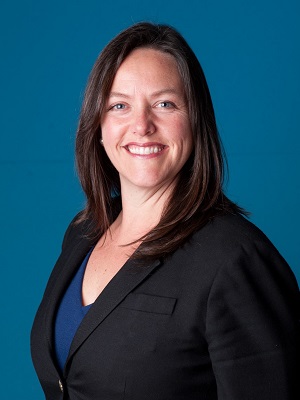In our increasingly on-demand society – where, with a few taps on a smartphone screen or clicks of a mouse, consumers can now do everything from ordering transportation to completing major financial transactions – access to health care via technology is growing, but overall use remains low. Why is this?
With all the innovation and investment in and around telehealth technologies like video visits, remote monitoring, and sharing of clinical data and images, why aren’t more patients able to avail themselves of these tools to receive care more conveniently?
As a policy professional working with internal and external stakeholders to advance telehealth at the state and federal levels, I am frequently asked these types of questions. The most oft-cited reason for adoption being relatively low is the lag in legislative, regulatory, and payment system changes to keep up with the technological advances. But there is more to it than stubborn regulators.
To help drive toward some answers, Kaiser Permanente convened a forum in December, “Leveraging Telehealth to Expand Access to High-Quality Care,” at our Center for Total Health in Washington, D.C. More than 80 leaders from across the health care sector, including health plan and provider executives, clinicians, researchers, policy experts and consumer advocates, engaged in robust discussion of telehealth as a component of health care delivery today and into the future.
Keynote speaker Helen Burstin, MD, executive vice president and CEO of the Council of Medical Specialty Societies, inspired participants to “be big and bold.” Drawing on her decade of work as the chief scientific officer for the National Quality Forum, Dr. Burstin outlined several themes that resonated in the day’s presentations and discussions and help to chart a course for future work:
- the need for clear evidence to demonstrate telehealth improves access and outcomes and reduces costs in order to drive payment and reimbursement decisions;
- taking the “long view” and connecting telehealth to broader efforts toward bending the cost curve, such as by leveraging telehealth to reduce the need for high-cost interventions like hospitalizations;
- the ability of integrated systems like Kaiser Permanente and the Veterans Health Administration (VHA) to more easily measure and demonstrate the effectiveness of telehealth due to their internal payment models;
- the need to incorporate telehealth into clinicians’ education to complement traditional clinical training; and
- ensuring social barriers, including the “digital divide,” are addressed as we look to the future of access to care via telehealth.
Federal Coverage and Reimbursement Remain Limited
Mark Miller, PhD, vice president of health care at the Laura and John Arnold Foundation and former executive director of the Medicare Payment Advisory Commission, emphasized the evidence around telehealth effectiveness and cost is very mixed, and what works in managed care is not necessarily transferable to the “Wild West” of fee-for-service payment systems. Currently, Medicare provides coverage of telehealth only for beneficiaries in rural and underserved parts of the country.
While at Kaiser Permanente we have been able to integrate telehealth services into regular care delivery workflows due to our budget-based approach to provider payment, permitting all Medicare fee-for-service providers to bill for telehealth services could mean large growth in utilization and costs without assurances the care is effective. For this reason, Kaiser Permanente has advocated the federal Centers for Medicare & Medicaid Services extend flexibility to Medicare Advantage plans, whose payments are capitated, as a low-risk opportunity to demonstrate the effectiveness of telehealth for Medicare beneficiaries.
Progress in Some Sectors
While regulation lags behind, said Brian Marcotte, large employers see a need and are “not willing to wait” for the delivery system to catch up. Marcotte, president and CEO of the National Business Group on Health, said employers are eager to make telehealth available to their employees, with 96 percent of large companies planning to cover some telehealth services in 2018. Also leading the way in telehealth adoption is the VHA, which Neil Evans, MD, head of the VHA Office of Connected Care, said performed 2.1 million telehealth encounters in 2016.
Within Kaiser Permanente, adoption is growing. As of 2016, more than half of all “touches” between a member and a provider were virtual, including email, phone, and video encounters. We see members like panelist Brenda Trueheart, who described how using telehealth tools, including scheduled telephone and video visits and remote monitoring, allow her to see and talk to her own physician while saving her time and travel.
The Path Forward
Susan Dentzer, president and CEO of the Network for Excellence in Health Innovation, described the “Health Care Without Walls” initiative, a project to advance a research and thought leadership agenda toward a vision of a health care system that meets patients where they are. Workstreams within the initiative will bring together diverse experts to tackle reimbursement issues, technology, regulatory barriers, workforce challenges, and human factors affecting telehealth adoption. At the same time, the American Telemedicine Association, led by interim CEO Sabrina Smith, has launched a value proposition initiative to collect evidence-based stories and use cases that can help inform future policy discussions. (Click here to read Susan Dentzer’s blog post about the Forum.)
With these efforts and many others discussed at the forum, I see a promising path toward building the evidence base that will help us collectively address the key questions around telehealth effectiveness and costs, making way for increased access to these technologies for health care consumers.

